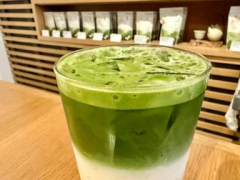The world’s fondness for matcha is about to be tested by steep price increases.
Global demand for the powdered tea has skyrocketed around the world, fueled by consumer interest in its health benefits and by the bright green matcha lattes bubbling up on social media. In the U.S., retail sales of matcha are up 86% from three years ago, according to NIQ, a market research firm.
But the matcha market is troubled. In Japan, one of the biggest matcha producers, poor weather reduced this year’s harvest. Matcha is still plentiful in China, another major producer, but labor shortages and high demand have also raised prices there.
For Americans, there’s the added impact of tariffs. Imports from China are currently subject to a 37.5% tariff, while the U.S. has a 15% tariff on imports from Japan. It’s not clear if tea will be exempted from tariffs because it’s a natural product that’s not grown in significant quantities in the U.S. — an accommodation that the Trump administration has made for cork from the European Union. The Commerce Department and the U.S. Trade Representative didn’t respond to messages left by The Associated Press.
Aaron Vick, a senior tea buyer with California-based tea importer G.S. Haly, says he paid 75% more for the highest-grade 2025 crop of Japanese matcha, which will arrive in the U.S. later this fall. He expects lower grades of matcha to cost 30% to 50% more. Chinese matcha — while generally cheaper than Japanese matcha — is also getting more expensive because of high demand, he said.
“People should expect an enormous increase in the price of matcha this year,” Vick said. “It’s going to be a bit of a tough ride for matcha devotees. They will have to show the depth of their commitment at the cash register.”
Even before this year’s harvest, growing demand was straining matcha supplies. Making matcha is precise and labor intensive. Farmers grow tencha — a green tea leaf — in the shade. In the spring, the leaves are harvested, steamed, de-stemmed and de-veined and then stone ground into a fine powder. Tencha can be harvested again in the summer and fall, but the later harvests are generally of lower quality.
There are ways to cut corners, like using a jet mill, which grinds the leaves with high pressure air. But Japan has other issues, including a rapidly aging workforce and limited tencha production. And despite Japanese agricultural ministry trying to coax tea growers to switch to tencha from regular green tea, m





